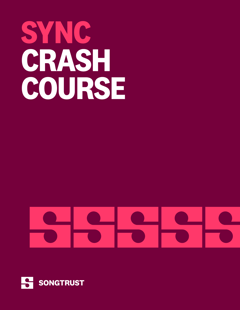Lyric sheets may sound relatively simple — a piece of paper capturing a song’s key verses and choruses — but they’re often a deciding factor in securing major songwriting gigs or sync placements.
Similar to a jobseeker’s resume, lyric sheets are primarily used to pitch songs to various members of the music industry. And like a resume, they should be clear, concise, and grammatically correct, with contact information that is accurate and easily accessible.
Are you ready to start approaching (or be approached by) labels, music supervisors, or sync companies for placements? Here’s everything you need to know about lyric sheets.
When Do I Need to Use a Lyric Sheet?
Lyric sheets are typically used if you're a full-time songwriter looking to get your work recorded and released by major artists. Other real-world scenarios include trying to attract the attention of record labels or sync companies for possible sync placement.
Lyric sheets may also come in handy if a music supervisor is looking for a certain line to hammer a scene’s underlying theme home. Think: Donnie Darko’s use of the melancholic and moody Tears for Fears cover “Mad World,” namely the devastating line “the dreams in which I’m dying are the best I’ve ever had.”
Or as music supervisor Thomas Golubić (Six Feet Under, Breaking Bad, The Walking Dead) said in a Spotify interview, “Music is an extraordinarily powerful way to express emotion. It can be tremendously useful in trying to establish pace and tone. It does a lot of legwork for storytelling overall.”
How Do I Format a Lyric Sheet?
Experts differ on how to format a lyric sheet — here’s an example from BMI — but everyone pretty much agrees on these key parts:
-
Your name and the name of any co-writers, as well as everyone’s contact info
-
Your publishing information (if applicable), including the name of your Performing Rights Organization (PRO)
-
An accurate D.O.C (Date of Creation)
These details are as important as the lyrics themselves — a necessary source of songwriter information for record labels, music publishers, music supervisors, and anyone else interested in using your song.
Producers and vocalists may also use your lyric sheet, so make sure every line is written out in its entirety. If a chorus is repeated twice, type it out twice; this makes it much easier for vocalists and other musicians to follow the flow of the song.
Some professionals suggest indenting the chorus to make it stand out, too, while others suggest using italics. Make sure the entire song fits easily on a single typed page either way. And if you’re including multiple lyrics, or your lyrics don’t fit on one page, make sure to indicate this by incorporating page numbers.
Set Your Lyrics Up For Success
Having a well-formatted lyric sheet shows you are serious about finding ways for your work to thrive. It acts as both a resume and portfolio, representing you and your talents to the music industry. Here is a lyric sheet template that can help get you on the path for potential sync placements and other monetization opportunities.
And, if you’re curious about the world of sync, check out our Sync Crash Course for everything you need to know about placements and sync royalties.






